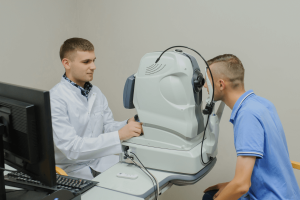
Advances in genome and exome sequencing have dramatically increased the identification of disease-related genes, with databases like OMIM adding over 100 such genes annually. However, genetic diagnosis alone rarely provides a basis for drug target hypotheses, particularly for rare disorders, around 95% of which lack approved therapies or established therapeutic targets.
Approximately 74% of rare diseases affect the central nervous system, where pleiotropic clinical presentations and diverse in vivo phenotypes make it difficult to study disease onset and progression. Variants in the same gene may also lead to divergent phenotypes, which illustrates the need for efficient ways to model patient-specific mutations and develop personalized therapies. Another approach to drug discovery is the use of whole-organism models and phenotypic screens, which are particularly useful when high-throughput methods are limited to strong, easily measurable phenotypes.
This has been challenged in recent studies using high-throughput worm tracking in Caenorhabditis elegans, which have shown potential for systematic phenotyping and drug repurposing in a single multiwell plate assay. This work builds on previous knockout-driven studies of 25 disease models, including homozygous loss-of-function, heterozygous, and single amino acid replacement mutants, to examine a wide range of behavioral phenotypes and facilitate scalable drug discovery.
Mutants were generated using CRISPR-Cas9, with loss-of-function alleles created through large deletions and patient-specific variants introduced via single codon edits. The growth of the strains occurred on NGM plates at 20°C, synchronized to reach youthful adulthood, and was imaged using a 96-multi-camera tracking system. Each recording contained 5 minutes pre-stimulus, 6 minutes blue light stimulus, and 5 minutes post-stimulus.
Tierpsy software was used to extract behavioural features and generated 2763 measures per video and 8289 per well. Hierarchical clustering and principal component analysis were applied to compare phenotypes across mutants. Further experiments included chemical-based treatments (aldicarb, paraquat, AMPK/mTOR pathway compounds), higher temperature exposures, and silencing of related genes by RNAi to improve phenotype resolution in weakly affected strains.
Behavioral differences with wild-type N2 worms were observed in all 25 mutant strains, with a variety of genetic pathways and phenotypes. Hierarchical clustering revealed that genes with similar cellular functions generally exhibited comparable behavioural profiles. However, notable exceptions existed, such as the blos-8 loss-of-function mutant in the BORC complex, which displayed distinct phenotypes compared to other subunits. Measurable behavioural changes occurred when stimulated by blue light, and some mutants, such as odr-8(syb4940) and fnip-2(syb8038), displayed defective post-stimulus recovery.
Out of 25 strains, 22 exhibited strong phenotypes with more than 1,000 statistically significant differences, which could be used in drug screening. Mutants in BORC complex genes (blos-1, blos-8, blos-9, sam-4) displayed over 3000 altered features, reflecting their shared impact on neuronal activity. An imb-2(syb6372) weakly phenotypic strain has been sensitized using temperature, chemicals, or RNAi methods, which showed otherwise hidden differences such as aldicarb-induced paralysis.
High-throughput behavioral phenotyping of C. elegans enables the systematic recharacterization of a wide range of disease-associated variants, including patient-specific mutations. The research shows that large gene deletions provide a rapid initial estimate of loss-of-function phenotypes, while chemical and genetic sensitization strategies help uncover subtle effects. Mutants of the BORC complex highlight the conservation of neuronal phenotypes across species, supporting the utility of C. elegans as a model for neurodevelopmental disorders.
Overall, this platform enables a scalable, cost-effective approach to drug repurposing and therapeutic discovery, facilitating the investigation of genotype-to-phenotype relationships in hundreds of Mendelian diseases and advancing progress toward personalized treatments.
References: O’Brien TJ, Navarro EP, Barroso C, et al. High-throughput behavioural phenotyping of 25 C. elegans disease models including patient-specific mutations. BMC Biol. 2025;23:281. doi:10.1186/s12915-025-02368-8












